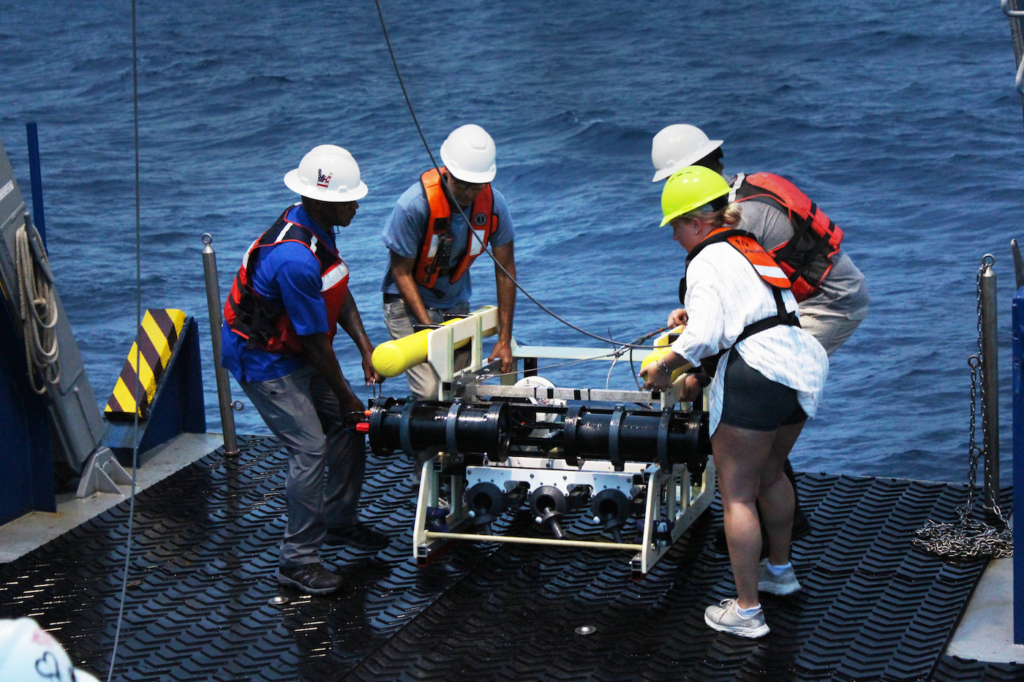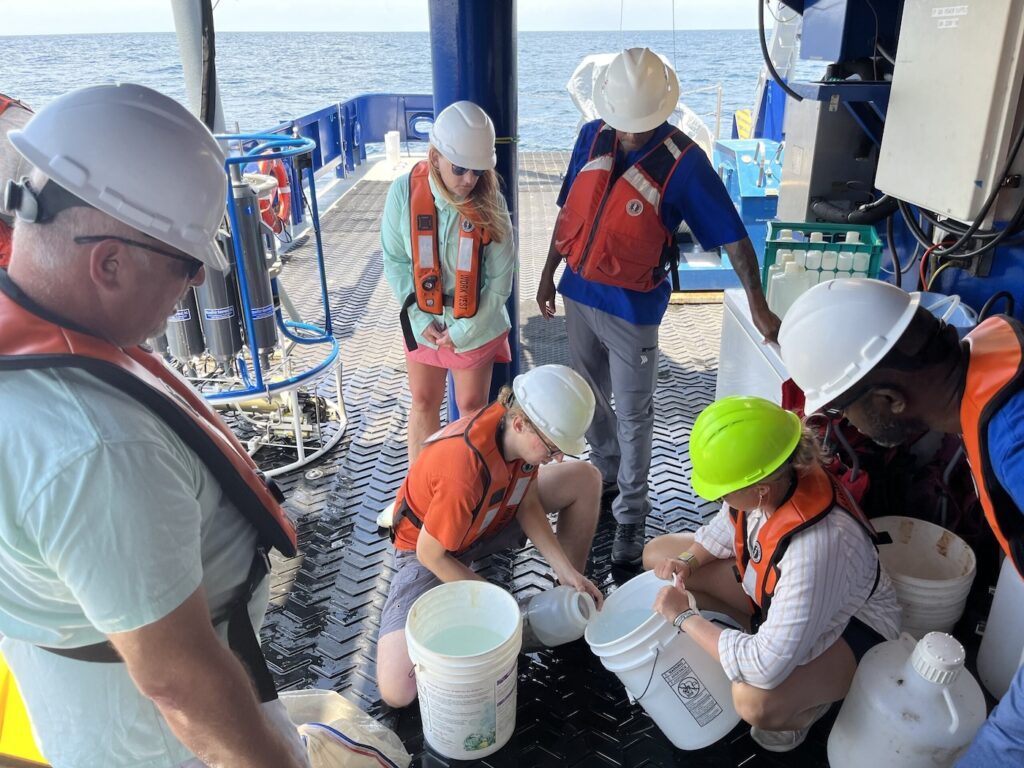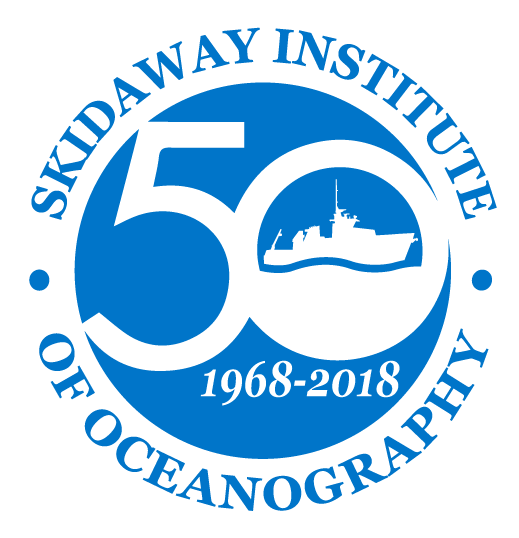Educators from Johnson High School plan to use what they experienced on the R/V Savannah to mold future lessons and projects.

In late June, several dozen miles off the Southeast Georgia coast, a group of Sol C. Johnson High School (JHS) educators stood inside the R/V Savannah, looking over the shoulder of a University of Georgia Skidaway Institute of Oceanography (SkIO) scientist, trying to help him spot various plankton in images quickly flashing across a computer screen.
The images were being taken live — five times per second, to be exact — by a high-definition camera device being pulled behind SkIO’s 104-foot research vessel. Just moments before, the device had been assisted into the water by Derrick Muhammad, JHS principal.

Invited by SkIO scientists Adam Greer and Marc Frischer, Muhammad, along with four additional JHS educators, spent just over 24 hours on the ship, learning about the process of collecting oceanographic data with the ultimate goal of relaying insights back to their students and using their experience to develop future lesson plans.
“For the UGA Skidaway Institute of Oceanography to partner with Johnson High School has been a blessing,” said Muhammad. “We are very energized to take this information back to our students at Johnson to get them excited.”
Both parties foresee the partnership growing.
“Through our conversations with the teachers, we definitely could see new ideas percolating about how these experiences and data we collected could be incorporated into science curricula,” added Greer, the chief scientist on the cruise.

The JHS educators first arrived at the SkIO dock around 7:40 a.m. on Thursday, June 27, 20 minutes before departure time.
As the R/V Savannah chugged down the Wilmington River, heading out into the Atlantic Ocean, the educators took a seat in the ship’s conference room, where Frischer and Greer gave a lesson on microorganisms in the local waters that serve as the foundation of the marine food web.

After traveling roughly 25 nautical miles offshore, the R/V Savannah reached water with a depth of 25 meters, and the educators followed the scientists to the back of the vessel, where they deployed multiple scientific instruments, including one that collected water jam-packed with the plankton the SkIO scientists had introduced in their presentation. This device is a net which gets dragged through the water from the side of the vessel. It operates similarly to a fish trawl, but for smaller animals.
After pulling up the samples, the SkIO scientists led the JHS educators to the vessel’s lab room where they had the opportunity to examine the just-collected living organisms, as they swam in beakers placed on a lab bench.

Once the R/V Savannah reached waters roughly 45 meters deep, the SkIO scientists, with Muhammad’s help, deployed the imaging device. While pulled behind the ship, traveling two to three knots, the device sloped up and down through the water column, taking images of the various plankton passing through the device’s cameras.
Inside the vessel, the JHS educators glued their eyes to a computer screen displaying the images as PhD student Patrick Duffy went through and explained the image processing steps.

Once the new school year starts in August, all of these details will be shared with students in the International Baccalaureate (IB) Diploma Program at JHS. Both the JHS educators and the SkIO scientists look forward to growing the partnership and developing more hands-on opportunities for students.
“My team and I took away a better understanding of what it is that this team at SkIO is trying to accomplish and the importance of this sort of work,” said Amanda Fanelli, coordinator of the IB Program at JHS. “When it comes to food webs and the changing environment, it is essential that we learn and study this.”
The full list of JHS educators who joined the cruise includes science teacher Aasha Beard, IB coordinator Amanda Fanelli, science teacher Camilo Gamboa, science teacher Carlton Middleton and Principal Derrick Muhammad.
The full list of SkIO scientists who joined the cruise includes PhD student Patrick Duffy, co-chief scientist Marc Frischer, chief scientist Adam Greer, master’s student Grace Mann and scientist Anita Minnifield.
About SkIO
The UGA Skidaway Institute of Oceanography (SkIO) is a multidisciplinary research and training institution located on Skidaway Island near Savannah, Georgia. The Institute was founded in 1967 with a mission to conduct research in all fields of oceanography. In 2013, SkIO was merged with the University of Georgia. The campus serves as a gateway to coastal and marine environments for programs throughout the University System. The Institute’s primary goals are to further the understanding of marine and environmental processes, conduct leading-edge research on coastal and marine systems, and train tomorrow’s scientists. For more information, visit www.skio.uga.edu.



One comment on “Johnson High School educators join cruise on the R/V Savannah”
Comments are closed.